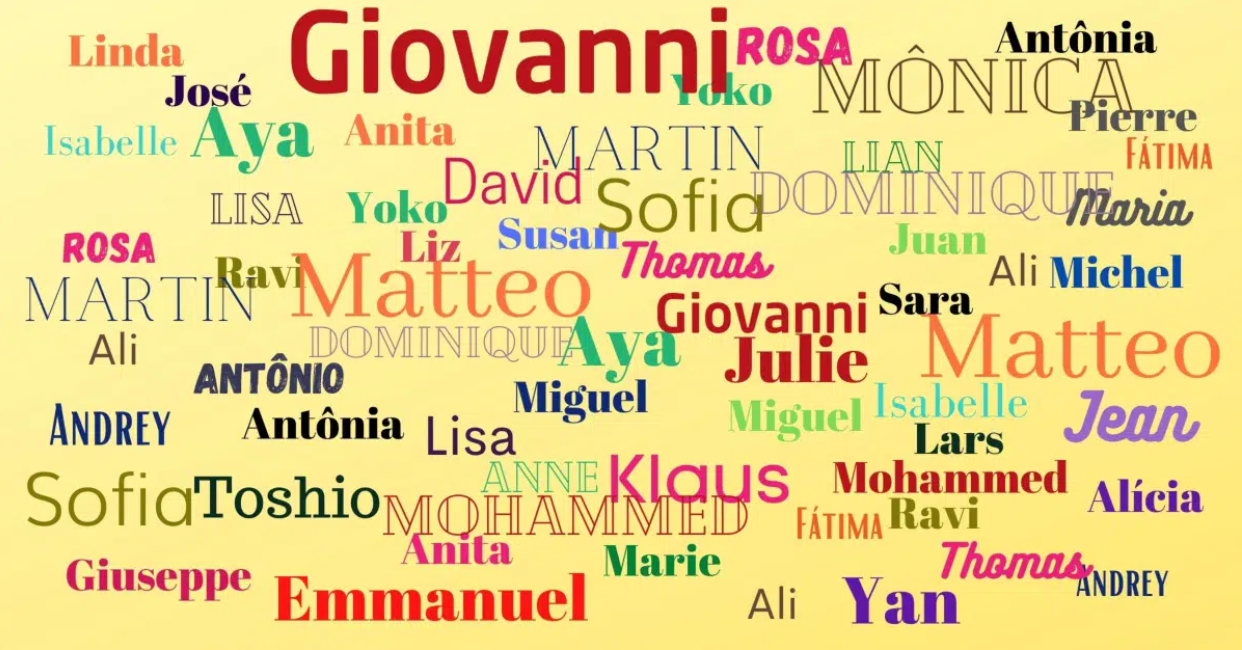The repetition of proper names

Repetition of Proper Names in Italian Families The importance of leitname1 in Italy is that they can help to better understand the history, culture and genealogy of the people who use them. Leitname or leading name (German Leitname, plural Leitnamen) is a given name that is used repeatedly over several generations in a lineage or broader kin group. It can serve as sources of inspiration for creating names or for rescuing old names. Leitnamen are a way of expressing people's identity and memory through names.
The tradition of giving children the names of grandparents is more entrenched and ancient than we might think. Leitname probably derives from the custom of the hereditary name (Erbnamensette), consisting of calling the first son by the name of the paternal grandfather (and the second son by the name of the maternal grandfather). In some cases, it is still practiced today and refers to all those names that literally dominated within entire families. Naming a child after the grandparents, these days, may also be a good idea, but only if the parents choose freely. We can observe in the genealogy of an Italian family an alternation of names. This characteristic can facilitate a search because the names that are repeated can indicate the belonging of a person to his family branch. It is important to be very careful not to mistake the different branches of the same family, especially cousins, who have the same grandparents. The doubt can be resolved by looking at the names of the parents and the dates.
A modern example in the Vighetto family is Enrico (Italian name)/Henrique (Brazilian name), the name Henrique alternated skipping a generation. Thus, we have great-grandfather, grandfather, and grandson respectively, Enrico was born in 1899, Henrique in 1969, and Henrique in 2022. And, in the same lineage we have grandfather and grandson respectively, Italo was born in 1932, and Italo in 1993. Enrico's first son was Joseph (Giuseppe as his father), but unfortunately, he passed away before he was a year old. His daughters were, Emilia (as his mother) and Clara (as his sister). The Vighetto family hails from northern Italy, from the Piedmont region.
Another consideration to be made is that the Italian, upon arriving in the Americas, changed his name to an equivalent name in the language of the country of arrival. To know the equivalences, it is necessary to check a table of correspondence of proper names. In this other family branch, the tradition is older, not being maintained today. In the Pivotto family, between the years 1682 to 1915 all the firstborn of the family were called Giacomo or Giovanni, in the following sequence: Giovanni 1682, Giacomo 1707, Giovanni 1732, Giacomo 1758, Giovanni 1788, Giovanni Giacomo 1819, Giacomo 1856, Fortunato Giovanni 1888, and Giacomo 1915.
When we search in original record books, written in Italian, we find this pattern of repetition of proper names several times. In Italy, leitname also have a long tradition and a great variety. They can be found at different levels: national, regional, provincial, municipal, or family. Leitname can originate from different sources, such as the tradition of naming children after grandparents or other illustrious relatives, the preference for certain names in a particular time or region, the influence of saints or folk heroes, the homage to historical or cultural personalities, etc. Leitnamen can change over time, disappear, or arise for different reasons, such as the reputation, influence, or origin of the name bearers.
1 “Leading Name.” 2021, Wikipedia. April 7, 2021, (https://en.wikipedia.org/wiki/Leading_name: access 29/09/2023).



